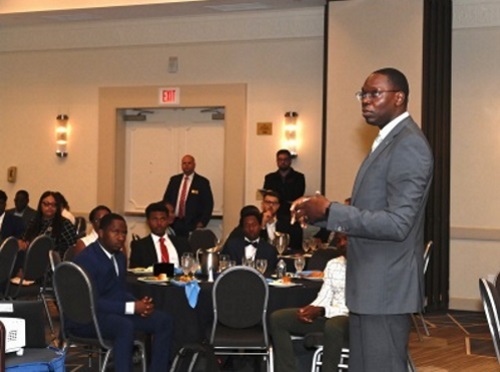The Michigan Department of Transportation recently put together a video reviewing the benefits of its Transportation Diversity Recruitment Program or TDRP, which the agency is using to “educate and inspire” the next generation of transportation professionals.
[Above photo by the Michigan DOT]
“This program, its structure, the fact that it’s been around for eight years and it’s only getting bigger and better, is really incredible,” noted Lieutenant Governor Garlin Gilchrist II (D) (seen above) in a statement. “As someone who’s benefited from having just thoughtful and conscientious mentors who helped to make me successful, that’s what we want for every young person who’s looking to pursue careers in whatever field.”
https://youtu.be/hzioMpvXzxc
The Michigan DOT said it has been working with students from Historically Black Colleges and Universities and colleges throughout Michigan to offer valuable on-the-job training and job shadowing to undergraduate students pursuing degrees in engineering or other transportation-related careers.
The TDRP began with four students eight years ago and has grown to include 59 students this season. The Michigan DOT said this 10-week program allows students to work alongside other on-the-job training program participants, internal staff and external professionals who provide engineering, technical, inspection, and project management services for state road and bridge projects.
The agency also recently created a new executive-level position to help the agency incorporate equity and inclusion in all aspects of its business.
The Michigan DOT’s new position of chief culture, equity, and inclusion officer or CCEIO oversees areas within the Bureau of Transportation Planning, the Office of Organizational Development, the Office of Business Development, the Equal Employment Opportunity Office, and the Office of Economic Development.
The agency noted that it designed this new CCEIO position to help it make “meaningful progress” optimizing its organizational culture, aligning equity and inclusion goals with business outcomes while responding to changes or policies that affect employee and customer populations.

